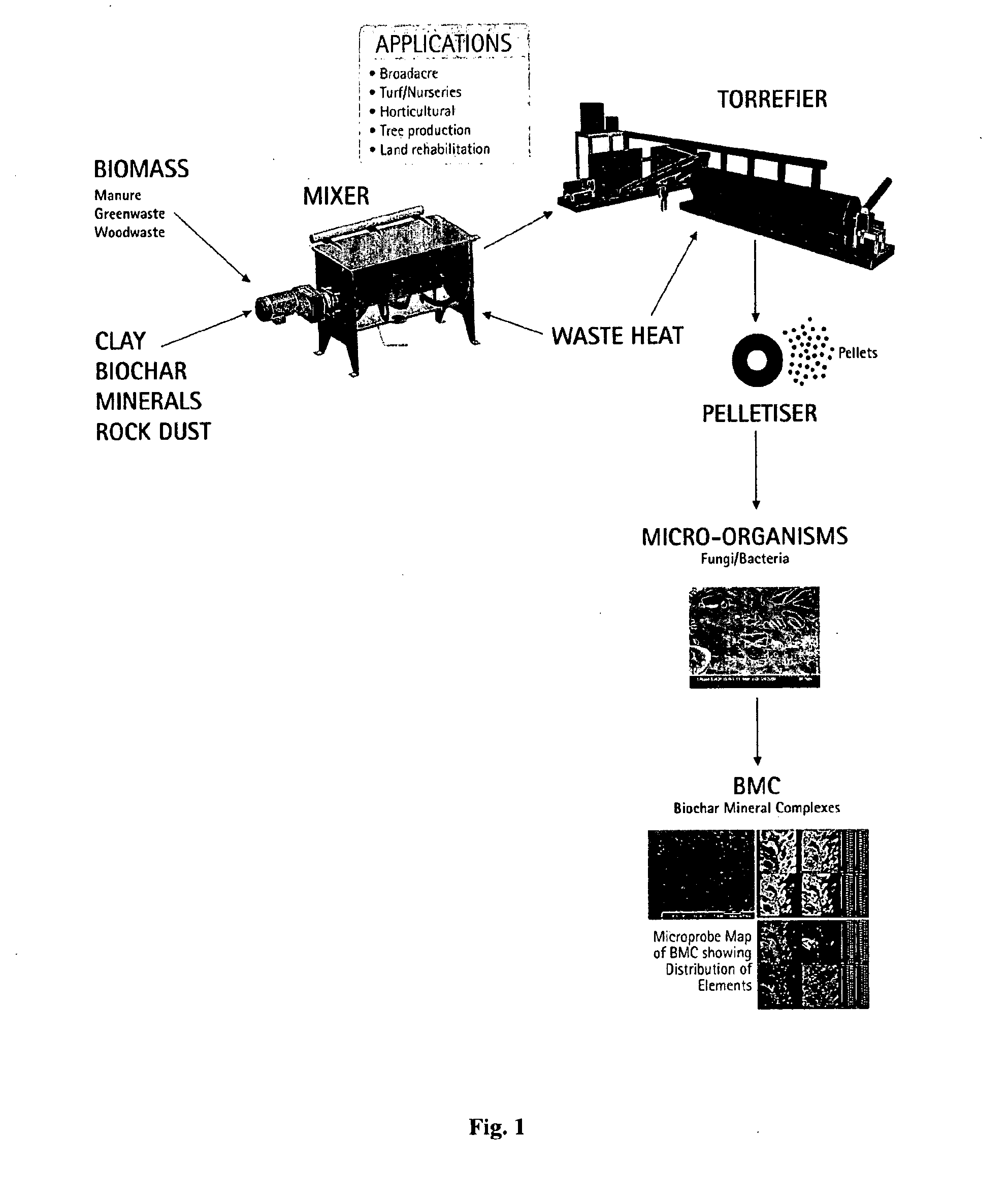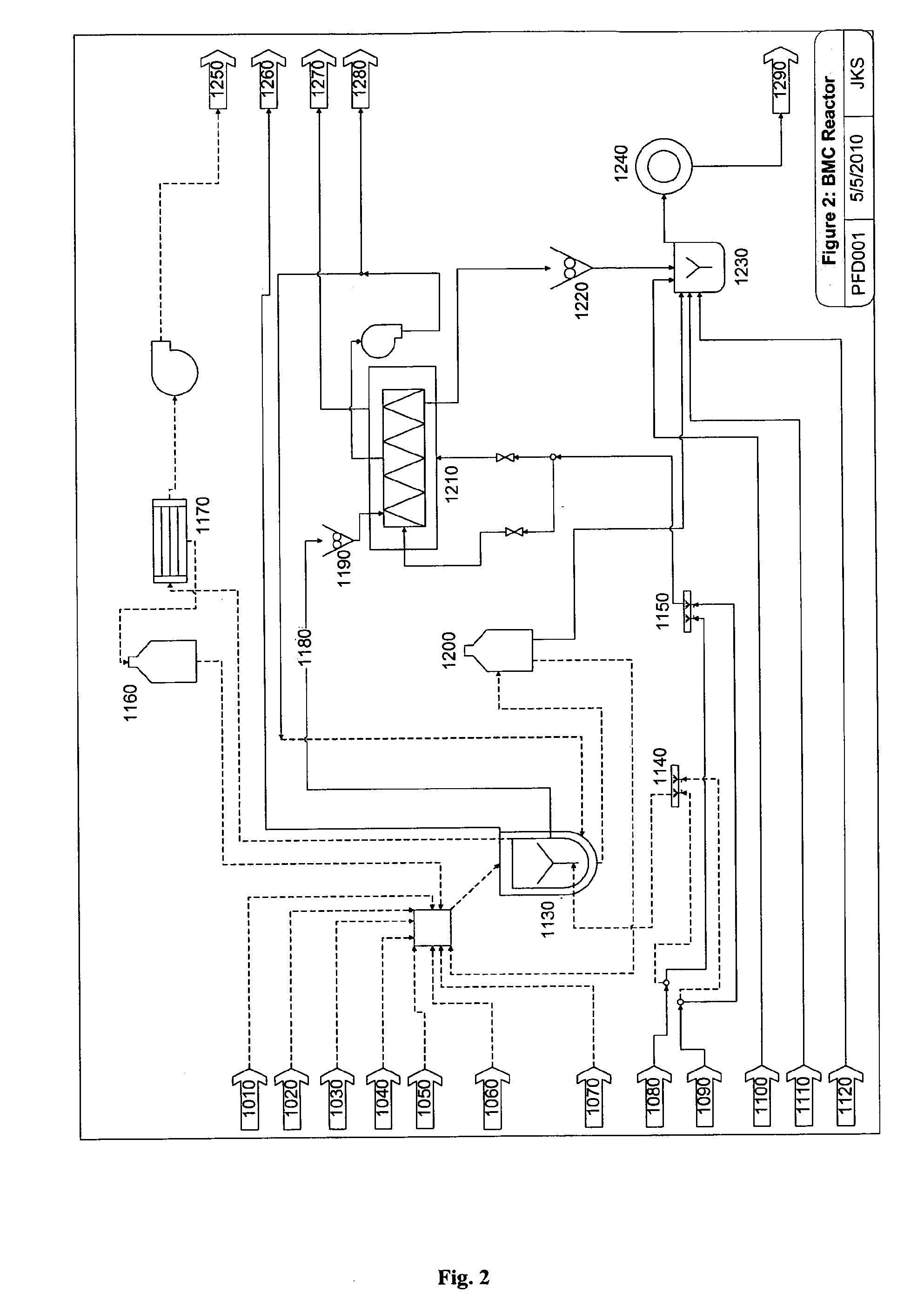Biochar complex
a biochar complex and complex technology, applied in the field of biochar complexes, can solve the problems of insufficient carbon credits, low incitation rate of individuals or organisations to use biochar, and many years of continuous addition of these materials, so as to improve yield, reduce the application rate, and build up the carbon content of soil
- Summary
- Abstract
- Description
- Claims
- Application Information
AI Technical Summary
Benefits of technology
Problems solved by technology
Method used
Image
Examples
example 1
[0163]An analysis was performed on two Biochar-Mineral Complexes (BMCs) according to the present invention: BMC 7 / 09 and BMC 8 / 09. Table 1 shows the methods used for analysis of both BMCs. R&H means Rayment and Higginson, USEPA means United States Environmental Protection Agency and in-house methods 235 and 236 are based on R&H methods 6B1 and 6A1, respectively. Samples were air dried at 40° C. in dehydrators according to Method 1B1 (Rayment and Higginson, 1992). The results of the each analysis are shown in Table 2. Results are expressed on a dry weight basis unless otherwise stated.
TABLE 1Analytical MethodMethod NumberDetermination of Gillman and Sumpter ExchangeableR&H 15E1Cations by ICPUSEPA 6010Organic Carbon % (Walkley & Black)In-house 236Total Nitrogen and Total Carbon by DumasIn-house 630Combustion MethodAcid ExtractionUSEPA 3050BAcid Extractable Elements and Metals by ICPUSEPA 6010Available Orthophosphate Phosphorus in Soil UsingR&H 9E2Bray #1 ExtractionMineral Nitrogen KCl...
example 2
Biochar-Mineral Complex as a Fertiliser Replacement
[0164]A Biochar-Mineral Complex (BMC) was prepared by torrification of a mixture of clay, organic matter and biochar with selected minerals. The total mineral analysis was N=1.2%, P=1.6%, K=0.8%, S=0.6%, Al=1.6%, Fe=1.5 and C=24% (including approximately 10% wood biochar). Experiments were performed in 2009 on two soils (red deep loamy duplex with Colwell P 30 ppm and yellow / brown deep sandy duplex with Colwell P 24 ppm). The area was chemical fallowed in 2008; plots 2.0 m wide and 30 m long were laid out in randomized block designs with four replicates. A crop of Westonia wheat was sown on 4 and 5 Jun. 2009. Starter fertiliser was either nil, single superphosphate or a range of biochar mineral complex fertilisers. Other nutrients were basaled; N and K were applied in June and July. The growing season rainfall was 340 mm. All sites had additional N and K added. The aim of the experiment was to see if BMC was a more effective replace...
example 3
[0167]FIG. 4 shows a comparison of the Mean Total Yield (t / ha) of Bonnie Rock wheat crops to which were applied different combinations of fertiliser. “Min” corresponds to 100 kg / ha NPK Crop Plus; “Mic” corresponds to 750 g / t Ag Microbes on Seed; “BMC / Min” corresponds to 70 kg / ha NPK Crop B; “Std” corresponds to 70 kg / ha Macro Pro Extra plus 400 ml / ha intake in furrow; and “urea” corresponds to 27.5 kg / ha granular urea (4 w.a.s.). In each case 80 kg / ha of wheat was sown.
PUM
| Property | Measurement | Unit |
|---|---|---|
| temperature | aaaaa | aaaaa |
| temperature | aaaaa | aaaaa |
| temperature | aaaaa | aaaaa |
Abstract
Description
Claims
Application Information
 Login to View More
Login to View More - R&D
- Intellectual Property
- Life Sciences
- Materials
- Tech Scout
- Unparalleled Data Quality
- Higher Quality Content
- 60% Fewer Hallucinations
Browse by: Latest US Patents, China's latest patents, Technical Efficacy Thesaurus, Application Domain, Technology Topic, Popular Technical Reports.
© 2025 PatSnap. All rights reserved.Legal|Privacy policy|Modern Slavery Act Transparency Statement|Sitemap|About US| Contact US: help@patsnap.com



